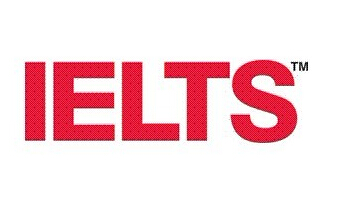雅思阅读真题之Why did a promising heart drug fail
2013-08-01 11:34 供稿单位: 新航道
出国英语考试有哪些 雅思6.5是什么水平 雅思阅读评分标准 托福阅读评分标准 雅思和托福的区别
Why did a promising heart drug fail?
Doomed drug highlights complications of meddling with cholesterol.
1. The failure of a high-profile cholesterol drug has thrown a spotlight on the complicated machinery that regulates cholesterol levels. But many researchers remain confident that drugs to boost levels of 'good' cholesterol are still one of the most promising means to combat spiralling heart disease.
2. Drug company Pfizer announced on 2 December that it was cancelling all clinical trials of torcetrapib, a drug designed to raise heart-protective high-density lipoproteins (HDLs). In a trial of 15000 patients, a safety board found that more people died or suffered cardiovascular problems after taking the drug plus a cholesterol-lowering statin than those in a control group who took the statin alone.
3. The news came as a kick in the teeth to many cardiologists because earlier tests in animals and people suggested it would lower rates of cardiovascular disease. "There have been no red flags to my knowledge," says John Chapman, a specialist in lipoproteins and atherosclerosis at the National Institute for Health and Medical Research (INSERM) in Paris who has also studied torcetrapib. "This cancellation came as a complete shock."
4. Torcetrapib is one of the most advanced of a new breed of drugs designed to raise levels of HDLs, which ferry cholesterol out of artery-clogging plaques to the liver for removal from the body. Specifically, torcetrapib blocks a protein called cholesterol ester transfer protein (CETP), which normally transfers the cholesterol from high-density lipoproteins to low density, plaque-promoting ones. Statins, in contrast, mainly work by lowering the 'bad' low-density lipoproteins.
Under pressure
5. Researchers are now trying to work out why and how the drug backfired, something that will not become clear until the clinical details are released by Pfizer. One hint lies in evidence from earlier trials that it slightly raises blood pressure in some patients. It was thought that this mild problem would be offset by the heart benefits of the drug. But it is possible that it actually proved fatal in some patients who already suffered high blood pressure. If blood pressure is the explanation, it would actually be good news for drug developers because it suggests that the problems are specific to this compound. Other prototype drugs that are being developed to block CETP work in a slightly different way and might not suffer the same downfall.
6. But it is also possible that the whole idea of blocking CETP is flawed, says Moti Kashyap, who directs atherosclerosis research at the VA Medical Center in Long Beach, California. When HDLs excrete cholesterol in the liver, they actually rely on LDLs for part of this process. So inhibiting CETP, which prevents the transfer of cholesterol from HDL to LDL, might actually cause an abnormal and irreversible accumulation of cholesterol in the body. "You're blocking a physiologic mechanism to eliminate cholesterol and effectively constipating the pathway," says Kashyap.
Going up
7. Most researchers remain confident that elevating high density lipoproteins levels by one means or another is one of the best routes for helping heart disease patients. But HDLs are complex and not entirely understood. One approved drug, called niacin, is known to both raise HDL and reduce cardiovascular risk but also causes an unpleasant sensation of heat and tingling. Researchers are exploring whether they can bypass this side effect and whether niacin can lower disease risk more than statins alone. Scientists are also working on several other means to bump up high-density lipoproteins by, for example, introducing synthetic HDLs. "The only thing we know is dead in the water is torcetrapib, not the whole idea of raising HDL," says Michael Miller, director of preventive cardiology at the University of Maryland Medical Center, Baltimore.
(613 words nature)
副标题#e#
Questions 1-7 This passage has 7 paragraphs 1-7.
Choose the correct heading for each paragraph from the list of headings below.
Write the correct number i-ix in boxes 1-7 on your answer sheet.
List of Headings
i. How does torcetrapib work?
ii. Contradictory result prior to the current trial
iii. One failure may possibly bring about future success
iv. The failure doesn’t lead to total loss of confidence
v. It is the right route to follow
vi. Why it’s stopped
vii. They may combine and theoretically produce ideal result
viii. What’s wrong with the drug
ix. It might be wrong at the first place
Example answer
Paragraph 1 iv
1. Paragraph 2
2. Paragraph 3
3. Paragraph 4
4. Paragraph 5
5. Paragraph 6
6. Paragraph 7
Questions 7-13 Match torcetrapib,HDLs,statin and CETP with their functions (Questions 8-13)..
Write the correct letter A, B, C or D in boxes 8-13 on your answer sheet.
NB You may use any letter more than once.
7.It has been administered to over 10,000 subjects in a clinical trial.
8.It could help rid human body of cholesterol.
9.Researchers are yet to find more about it.
10. It was used to reduce the level of cholesterol.
11. According to Kashyap, it might lead to unwanted result if it’s blocked.
12. It produced contradictory results in different trials.
13. It could inhibit LDLs.
List of choices
A. Torcetrapic
B. HDLS
C. Statin
D. CETP
Suggested Answers and Explanations
1. vi
2. ii
3. vii 本段介绍了torcetrapib和statin的治病原理,但是同时短语“in contrast”与之前第二段后半段的内容呼应,暗示了这两种药在理论上能相辅相成,是理想的搭配。个选项无法涵盖整段意义,故选择i是错误的。
4. iii 本段分析了可能导致torcetrapibl临床试验失败的原因,后半段指出如果以上推测正确,那么未来的药物可借鉴这个试验,设法避免torcetrapib的缺陷,研制出有效的药物。viii选项无法涵盖后半段的意思。
5. ix 见首句。
6. v
7. A 见第二段。题目中administer一词意为“用药”,subject一词为“实验对象”之意。
8. B 见第四段“… to raise levels of HDLs, which ferry cholesterol out of artery-clogging plaques to the liver for removal from the body.”即HDLs的作用最终是将choleserol清除出人体:“… for removal from the body”。
9. B 见第四段“But HDLs are complex and not entirely understood.”
10. C 见第二段“… plus a cholesterol-lowering statin”,即statin是可以降低cholesterol的。
11. D 见第六段“So inhibiting CETP, … might actually cause an abnormal and irreversible accumulation of cholesterol in the body.
12. A 见第三段。
13. C 见第四段“Statins, in contrast, mainly work by lowering the 'bad' low-density lipoproteins.”
以上就是新航道雅思频道为大家整理的雅思阅读真题之Why did a promising heart drug fail,希望对大家有帮助,更多资讯、资料请访问新航雅思真题频道 https://www.xhd.cn/ielts/yucezhenti/

- 新航道,英语成功之道。时间获取新航道英语学习资料和新鲜资讯,请在微信公众账号中搜索「新航道英语」或者「xhdenglish」,或用手机扫描左方二维码,即可获得新航道每日精华内容推送和英语学习经验分享,并参与新航道举办的各项活动。
精彩专题
更多视频荟萃
更多
-
新航道姚骏鹏-雅思阅读高分攻略
时长:03-06

-
新航道陈侃侃-雅思口语要有范儿
时长:03-06

-
【3分钟学雅思】王大锤告诉你为啥药不能停
时长:01-12

-
【3分钟学雅思】全世界个感官餐厅
时长:01-12
热门文章
更多
-
8月31日雅思广州考机考初体验
选择机考模式的考生将通过机考模式参加听...








